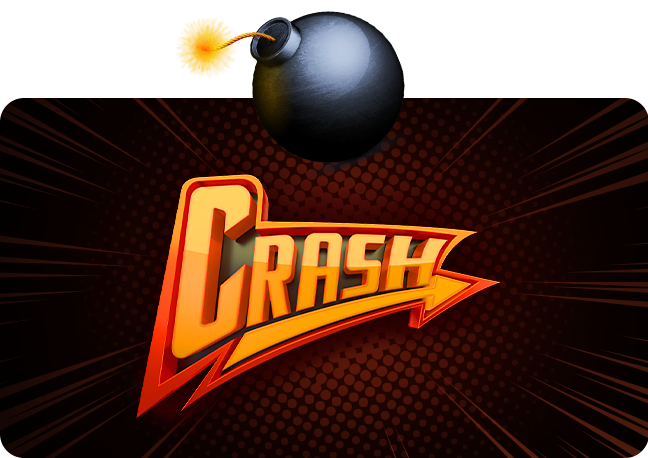Crash And Instant Games With Control

Crash and instant formats compress play into seconds. The pace can be a gift when information is honest and controls are close at hand. It can also be a drain when screens crowd out the basics. The difference comes down to structure – how rules are shown, how timing is handled, and how each round ends. A calm setup keeps choices deliberate even when the multiplier climbs or a result lands in the blink of an eye.
Short sessions deserve the same care given to long ones. Clear rules, steady buttons, and predictable exits turn quick play into a tidy routine. With a few habits and the right interface clues, momentum stays on the screen rather than in the bloodstream.
The Two Speeds: Bursts and Blinks
Crash games build tension as a line rises toward an eventual stop. Instant titles resolve nearly as fast as a tap. Both formats reward rhythm over impulse. A good first step is to audit a broad gateway for pace, clarity, and honest timers. While mapping options, browsing a neutral waypoint such as menace bet helps verify whether rules are readable in under a minute, whether speed controls stay reachable, and whether price or state changes ask for a clear accept rather than shifting silently.
Crash runs need early decisions about cashout points and stake scaling. Instant rounds benefit from a measured cadence that avoids compressing awareness of cost. In both modes, the best screens feel like instruments – they report facts without fanfare and never hide the next action.
Controls That Keep Hands Steady
Crash and instant formats move fast. Small frictions multiply. The following checklist keeps attention intact and mistakes rare:
- Cashout and stake controls remain large in portrait and landscape – never covering outcomes.
- Speed settings respond without lag – no layout shift after a tap.
- Rules sit one step away – outcomes, limits, and timing quirks explained in plain language.
- Sound peaks are gentle – cues confirm events without harsh spikes.
- A session timer lives near the balance and stake – guardrails where decisions happen.
When these basics hold, rounds feel crisp rather than frantic.
Pacing Models That Protect Attention
Tempo is the quiet lever of comfort. In crash games, two approaches dominate. A fixed cashout plan sets a primary target – for example, a conservative multiplier – then allows a rare, preplanned stretch when conditions align. A ladder plan splits a stake into small parts – one portion exits early to lock a modest return, a second portion rides a bit longer, and a final sliver aims for a higher tier. The ladder reduces regret while preventing full exposure at the riskiest levels.
Instant titles ask for a different rhythm. Rapid-fire taps compress perception of cost. A moderate cadence with short pauses every ten minutes preserves awareness and reduces fatigue. If an extra mode increases variance or lengthens animation time, the interface should say so and offer a quick path to scale exposure down. The goal is not to slow the fun. The goal is to keep choices deliberate.
Bankroll structure finishes the job. Separate session funds from everyday money. Use small units – often one to two percent of the session budget for standard rounds, smaller still for riskier runs. The unit stays constant through hot streaks and cold stretches. Stability in size keeps emotion out of the stake button.
Reading Interfaces Like Instruments
Fast formats leave little room for guesswork. Honest screens share a few traits. Latency and last update time appear where live data matters. Progress meters reflect real checkpoints, not hopeful estimates. If a figure moves, the change is explicit – accept the new state or hold. Animations confirm results, then step back to restore a clean view for the next choice.
Fairness cues also belong in plain sight. Links to testing information, clear notes on randomization, and consistent behavior under load build trust over weeks, not just minutes. If a crash line jitters during heavy traffic or an instant result arrives late without explanation, treat that as a warning and slow down or stop.
Reading the visual tone helps. Titles that keep contrast high without glare, use fonts that hold up in bright light, and avoid crowding symbols reduce eye strain. This may sound small. It is not. Over many quick rounds, clarity protects patience as much as any rule panel.
Clean Money and Records, Zero Guesswork
Funds are infrastructure. They should behave like utilities. Deposits confirm with timestamps. Withdrawal pages show queue status and lock details after submission, with a short window to cancel honest mistakes before processing. Method screens list fees and minimums on the same page as the confirm button. Calm movement of money turns a short session into a predictable routine.
Records outlast the adrenaline. A tidy ledger separates deposits, withdrawals, play history, and promotions. Filters by date and category, plus one-tap export, make weekly reviews trivial. When each ticket or round carries an ID, a rule link, and any price-change log, questions resolve in minutes rather than hours. Time saved on bookkeeping returns to real life.
Small Habits That Change Fast Play
Quick formats reward routine more than hunches. Three habits carry the most weight. Open the rules before the first tap – confirm outcomes and any timing quirks. Start at a measured cadence – only increase after the cost per round feels clear. Add planned breathers – a two-minute pause every ten to fifteen minutes to rest eyes and shoulders. End on a clock rather than on a mood. Capture a one-line note in the ledger – time played and stake used – then close the tab.
These moves do not bend probabilities. They bend the day toward calm. Crash and instant can be both quick and thoughtful when the environment supports control. With steady screens, honest timers, and money that moves exactly as promised, rounds become clean arcs – engage, decide, exit – ready to fit the gaps in a busy schedule without taking it over.

NFL Draft Diamonds was created to assist the underdogs playing the sport. We call them diamonds in the rough. My name is Damond Talbot, I have worked extremely hard to help hundreds of small school players over the past several years, and will continue my mission. We have several contributors on this site, and if they contribute their name and contact will be in the piece above. You can email me at nfldraftdiamonds@gmail.com
